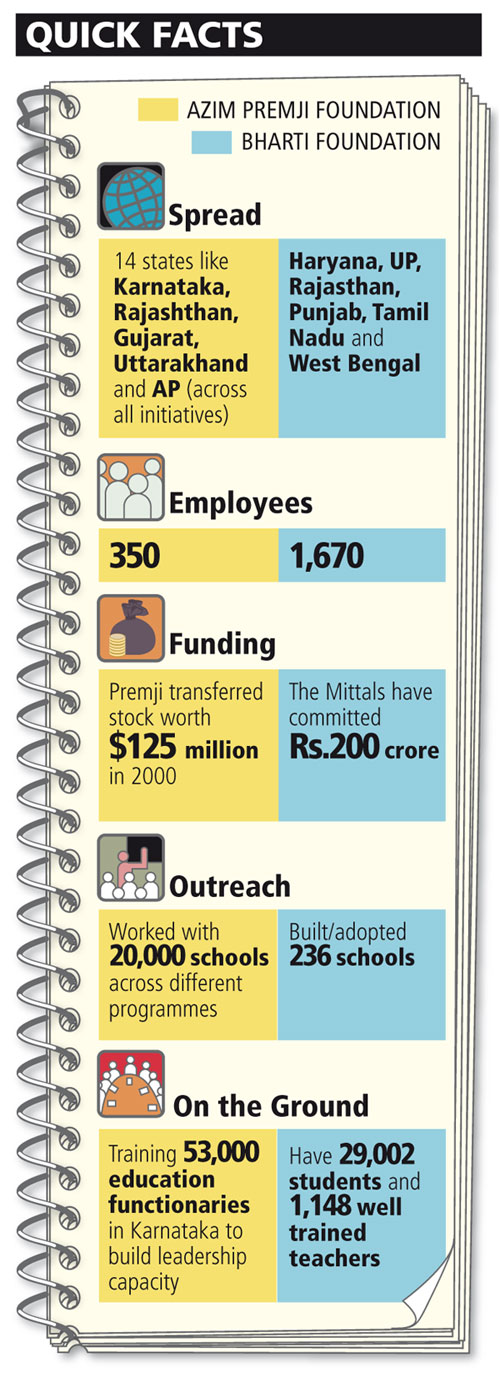
Learning Curve: Two Ways to Educate India
Two schools of thought on how the private sector can make a difference in bringing good quality education to rural India
Far away from the cut and thrust of running large corporate houses, there’s something that’s keeping Azim Premji and Sunil Mittal, among the most successful entrepreneurs in India, busy. For the last almost 10 years, both have committed serious money, managers and their own time to providing quality education for India’s underprivileged children. They recognise that education has perhaps the greatest “multiplier effect”.
The government’s initiatives so far have been largely tied with the spread of compulsory education. The Rs. 90,000-crore Sarva Shiksha Abhiyaan and the mid day meal programmes have achieved a measure of success in bringing more children into schools. But it’s been a victory of quantity over quality. Even though 80 percent of children aged six to 14 attend government schools where education is free, they remain effectively uneducated and therefore unemployable. Absenteeism is high, as is the dropout rate and those who attend hardly benefit.
According to the Annual Status of Education Report, 2009, more than 30 percent of the children in class I do not recognise numbers and letters. Half of class V students meet reading standards of just class II.
It is this gap that Premji and Mittal hope to bridge through the work of their philanthropic organisations, the Azim Premji Foundation (APF) and the Bharti Foundation (Bharti).
APF believes the best way to make an impact is by working with the state education departments to improve learning in classrooms. The logic is simple: With 7 million education professionals (teachers and support staff) and an annual spending of $13.5 billion (Rs. 62,000 crore), the government has already achieved scale that no private organisation could equal.
Bharti has chosen to build a parallel system of new schools — Satya Bharti schools — to provide quality education for free to the rural poor and set new benchmarks on how to educate children. Of course, it does still need to engage with local governments as it relies heavily on partnership from the villages. Typically, the village gives the land free on long lease on which the school is built.








